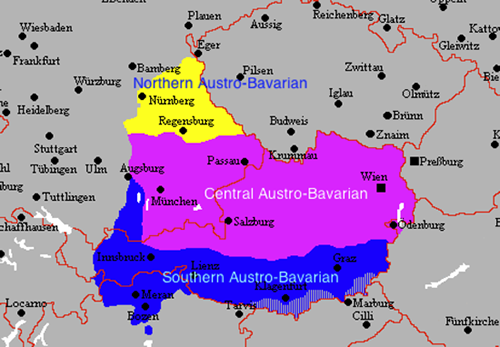|

In this chapter we take a look at the dialects spoken in Austria: Österreichisches Deutsch. Austria is a central European country located to the southeast of Germany. Since the High German sound shift took place in Austria as well, Österreichisches Deutsch shares many linguistic features with Upper German dialects (including, and especially with, Bavarian dialects). Yet despite the similarities in pronunciation and grammar, there are some significant differences between these varieties of German. German is considered pluricentric, in that it has several standard languages, and speakers of these standards identify closely with the national variety they speak. Austrian German is no different. There is a standard Austrian German, and there are a number of regional dialects:
Due to space limitations, and given the introductory nature of these Aussprache segments, we will focus primarily on the Austrian Standard dialect in comparison to Standard German and will provide only a brief introduction into the Viennese dialect of Austrian German. 
Source: http://en.wikipedia.org/wiki/Image:Bairisches_Mundartgebiet.png 1. ÖSTERREICHISCHES DEUTSCH While Austro-Bavarian dialects are generally mutually intelligible (with the exception of some versions of Tyrolean), Austrian varieties differ from German dialects in terms of vocabulary especially, due to historical reasons (close connection between the Habsburg and French royal families, which led to an influx of French words through education, diplomacy, court language, etc.). Below is a table comparing a few words from the Austrian dialect with Standard German.
2. WIENERISCH The Viennese dialect overlaps almost completely with Standard Austrian (and ergo Bavarian) German. The features that Wienerisch shares with these dialects are:
But there are some distinct sounds to be found in Viennese German as well:
Grammatically speaking, Viennese German is like Standard Austrian. It is, really, most distinct in the vocabulary it uses. Viennese contains many lexical items, which have their origin in other parts of the former Habsburg Empire since Vienna served as the melting pot of the constituent populations. Here is some uniquely Viennese vocabulary:
|
||||||||||||||||||||||||||||||||||||||||||||||||



